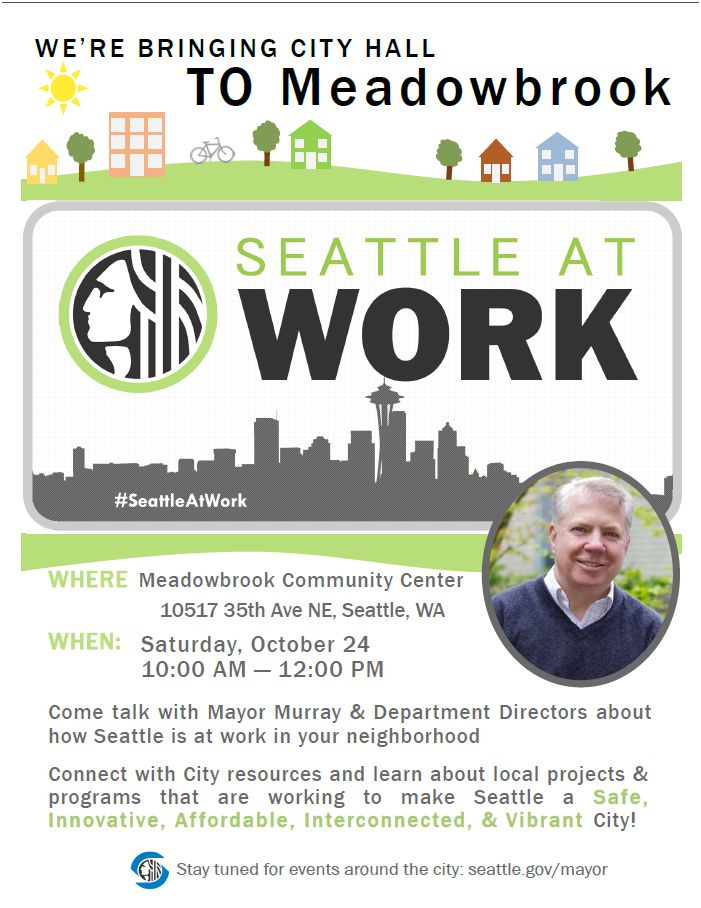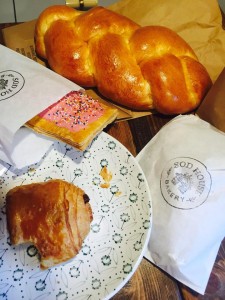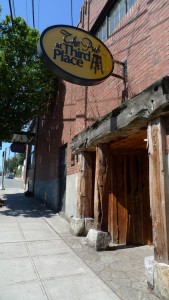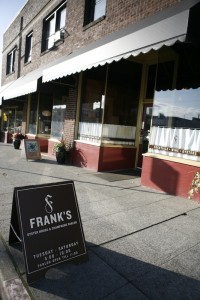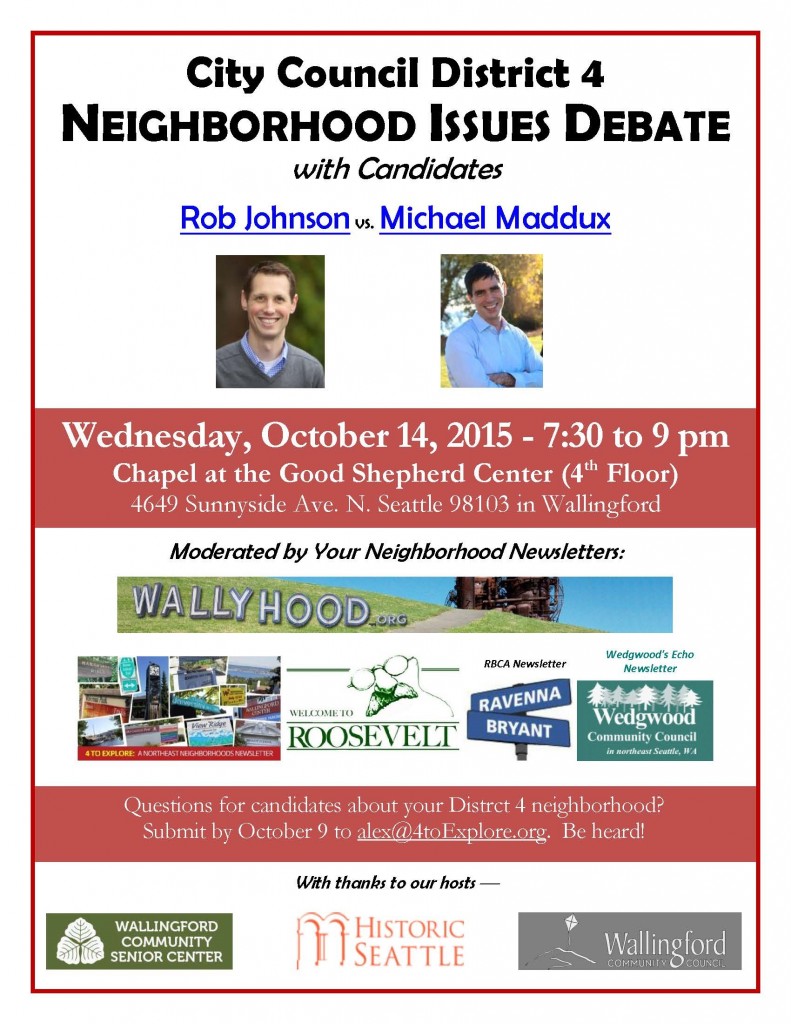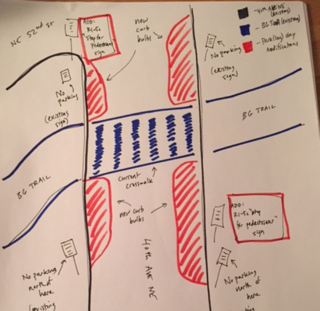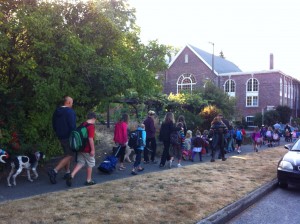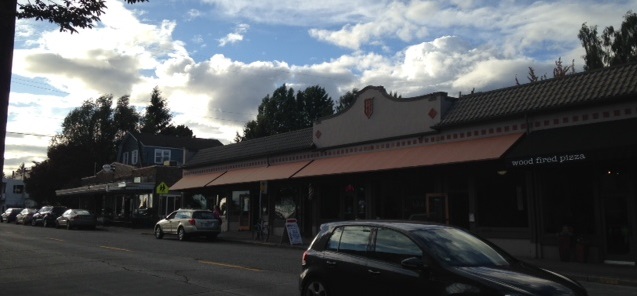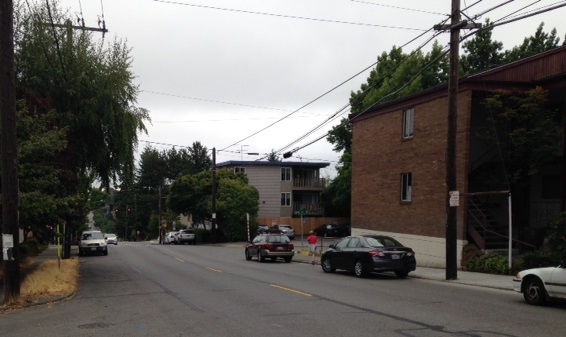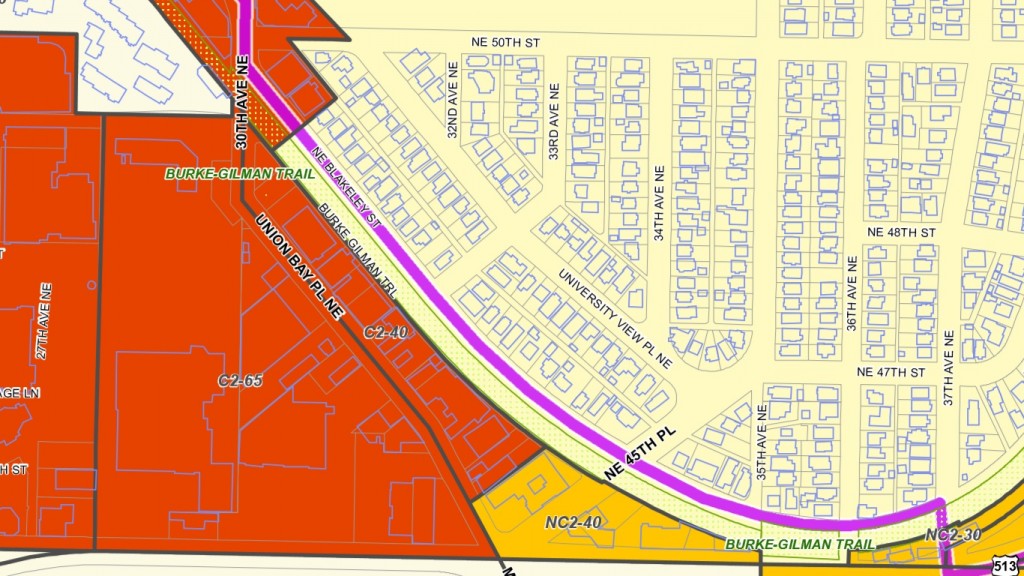Earlier this month, the Ravenna-Bryant Community Association Board sent a letter to King County Executive Dow Constantine about proposed changes to bus service in our community once light rail is available in the University District. Below is the letter and the response from Kevin Desmond, General Manager of Metro.
Dear Executive Constantine,
On behalf of the Ravenna-Bryant Community Association (RBCA), I am writing to offer comments regarding the proposed King County Metro (Metro) route restructure associated with the opening of Sound Transit’s University Link Light Rail (LINK). While RBCA finds many positive changes associated with the new service plan for Ravenna-Bryant, we also have concerns with specific components of the plan that do not take into account accessibility for all people who use transit.
Bus-Rail Connection at Husky Stadium
RBCA is concerned that the bus-rail connection between the routes serving Northeast Seattle is inadequate. The University of Washington Husky Stadium Station is in a challenging location to serve with a convenient bus connection, separated from Upper campus by Montlake Boulevard, which is often gridlocked in the southbound direction. In particular, the connection from the station to the closest Route 372 stop is, by our estimation, over 500 yards from one existing bus stop on Stevens Way and over 600 from the other. Even with the recently constructed land bridge over Pacific and pedestrian bridge over Montlake, this connection is sub-optimal in terms of time for the able bodied and unacceptably far for those who are not. Transferring between buses and trains should be quick and easy to navigate. With this problem in mind, we offer three suggestions, with reference to the attached Metro route map for the Montlake Triangle area:
• Loop the Route 372x, or some number of the Route 372x runs, such that the northbound route uses Montlake Boulevard, as the 65 is planned to do. This would allow the mobility impaired direct access to and from the station, while giving everyone a much more seamless connection from LINK to Northeast Seattle going north.
• Create a bus stop along Stevens Way directly in front of the land bridge pathway, which would reduce the walk by 150 yards. This would create a closer connection and a much better perception of connection to the station (and perhaps safety) by having the LINK station in direct line of sight from the drop off points.
• Work with Sound Transit to add more secure bike parking spaces, as only 140 total are planned for a station that is at the end of the high-capacity line, on a university campus, and adjacent to one of the most heavily utilized bike trails in the country.
Over the long-term, we hope Metro can work with SDOT and UW to create a more permanent fix to the situation by creating a southbound HOV lane along Montlake Boulevard or transit access through the UW parking lots.
Direct Bus Service to the University District
Metro plans to eliminate Route 71, which currently links Ravenna-Bryant with the University District and Downtown, with Route 16 which will bypass the University District on its way to Seattle Center. While we appreciate the renewed direct connection to Seattle Center, RBCA is concerned about losing a bus route that directly links community members to the University District and South Lake Union. Transferring from the new Route 16 to LINK at the Roosevelt station or another bus to get to the University District will prove difficult for the seniors and people with disabilities who rely on direct bus service to access medical services, religious organizations, and social programs located in the University District.
While we appreciate the goal of moving commuters from their homes to workplaces Downtown, RBCA requests that Metro also ensure that people who use transit for purposes other than getting to and from work be served by direct bus routes to places where important social and health services are provided in Northeast Seattle. The University District is only going to continue to grow to offer more programs and services for seniors and people with disabilities. Direct bus service reduces accessibility barriers so that they may connect with all that the University District offers them.
Thank you for your attention to these accessibility-related concerns.
Sincerely,
Inga Manskopf, President
Ravenna-Bryant Community Association
———————————————————————————-
Dear Ms. Manskopf:
Thank you for your email of July 19, 2015, to King County Executive Dow Constantine, offering comments regarding the proposed King County Metro (Metro) route restructure associated with the opening of Sound Transit’s University Link light rail. Executive Constantine forwarded your email and asked me to respond to you directly. Metro staff has thoroughly reviewed and considered your concerns and suggested changes to the proposal.
Before addressing your specific concerns and suggestions, I first want to acknowledge that Metro’s proposal for Northeast Seattle represents a significant change to the current route network in Northeast Seattle – a part of our system that has been relatively stable for decades. We know that many thousands of Northeast Seattle riders rely on Metro bus routes to meet their daily travel needs and have become well accustomed to using the system in its present form.
The proposed changes to bus service would be made in conjunction with University Link (U Link), the most significant transit investment the region has seen since the initial launch of light rail service in 2009. Beginning in early 2016, Link light rail will provide fast, frequent, and reliable service between the three largest markets in the Metro system: downtown Seattle, Capitol Hill, and the University District (U District). Our proposed restructure is consistent with our adopted service guidelines and with the ongoing effort to more fully integrate Metro and Sound Transit service. And, perhaps most importantly, the proposal is consistent with what most riders have told us they want and expect from Metro in relation to the U Link extension: better frequency, reliability, and connectivity.
In your letter, you suggested that Metro revise Route 372 to “loop,” such that the northbound route operates on Montlake Boulevard. While Metro staff seriously considered this routing alternative earlier in our process, we ultimately decided to propose bi-directional operation on Stevens Way for several reasons. An overwhelming majority of Route 372 riders currently use the route to access destinations in the U District and on the University of Washington (UW) campus, which we anticipate will continue to be the case. Given the steep slope between Montlake Boulevard and UW campus, and the limited number of places to safely cross Montlake Boulevard, shifting the route to Montlake Boulevard would significantly degrade access for many of our existing customers.
Whereas we proposed to have Route 65 “live loop” through the U District (operate through the U District without a scheduled layover), we ruled out the possibility of “live looping” Route 372 due to the length of the route and the congestion that it experiences along its pathway. It is imperative for Route 372 to have scheduled layover time in the U District to ensure reliable operations and to provide drivers with breaks. Also, staff had concerns about significantly increasing the number of buses turning onto Northeast Pacific Place from Northeast Pacific Street beyond what is already included in the proposal.
Your second suggestion was to create a bus stop along Stevens Way directly in front of the land bridge pathway (near Rainier Vista) in order to shorten the walking distance between access to Route 372 and UW Station. I am pleased to report that the University of Washington has authorized Metro to install a pair of stops just east of Rainier Vista, near Mason Road.
Third, you asked that Metro work with Sound Transit to add more secure bike parking spaces. Metro has been working closely with Sound Transit and UW throughout the Link Connections project, and bike parking has been a topic of prior discussion among staff. The information we have received from Sound Transit is consistent with the description in your letter: the current plan is to provide enough storage for about 140 bikes. Metro staff will follow up with Sound Transit and UW to inquire about the possibility of providing additional bike storage capacity at UW Station.
Finally, you expressed concern about Metro’s proposal to eliminate Route 71. While it is true that the proposed network does not include a “Route 71” per se, the functionality this route currently provides would largely be replaced by other proposed service, including:
• More direct peak commuter express service between Northeast Seattle and downtown on Route 76
• More frequent north-south service along 35th Avenue Northeast on Route 65
• More frequent north-south service along 25th Avenue Northeast on Route 372X
• More frequent north-south service along University Way on routes 45 and 67
• More frequent east-west service along Northeast 65th Street on Route 16
• Service along 15th Avenue Northeast on Route 73
With the proposed routes noted above, 94 percent of current Route 71 riders would have access to frequent, all-day service to the U District within about one-quarter mile of an existing Route 71 stop – a significant improvement over today.
For riders unable to access the north-south routes that provide direct connections to the U District, revised Route 16 will connect to routes 45 and 67 in the Roosevelt neighborhood. Because the stops in this neighborhood are located in close proximity to one another and the routes in question would provide frequent service, these connections would be relatively convenient. Additionally, the revision of Route 16 would connect Ravenna-Bryant to several new destinations including Magnuson Park, Green Lake, Wallingford, Fremont, and South Lake Union.
Thank you again for your email. If you have further questions or comments, please feel free to contact Mike Beck, Acting Supervisor of Service Planning, at 206-477-5860 or via email at mike.beck@kingcounty.gov.
Sincerely,
Kevin Desmond
General Manager
Metro Transit Division
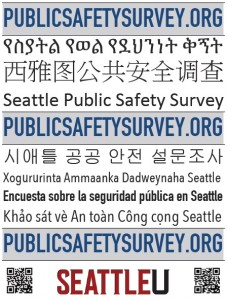 Seattle University is administering the citywide Seattle Public Safety Survey. The purpose of the survey is to solicit feedback on public safety and security concerns from those who live and/or work in Seattle. From October 15th through November 30th it is accessible at publicsafetysurvey.org and is available in Amharic, Chinese, English, Korean, Somali, Spanish and Vietnamese.
Seattle University is administering the citywide Seattle Public Safety Survey. The purpose of the survey is to solicit feedback on public safety and security concerns from those who live and/or work in Seattle. From October 15th through November 30th it is accessible at publicsafetysurvey.org and is available in Amharic, Chinese, English, Korean, Somali, Spanish and Vietnamese.
